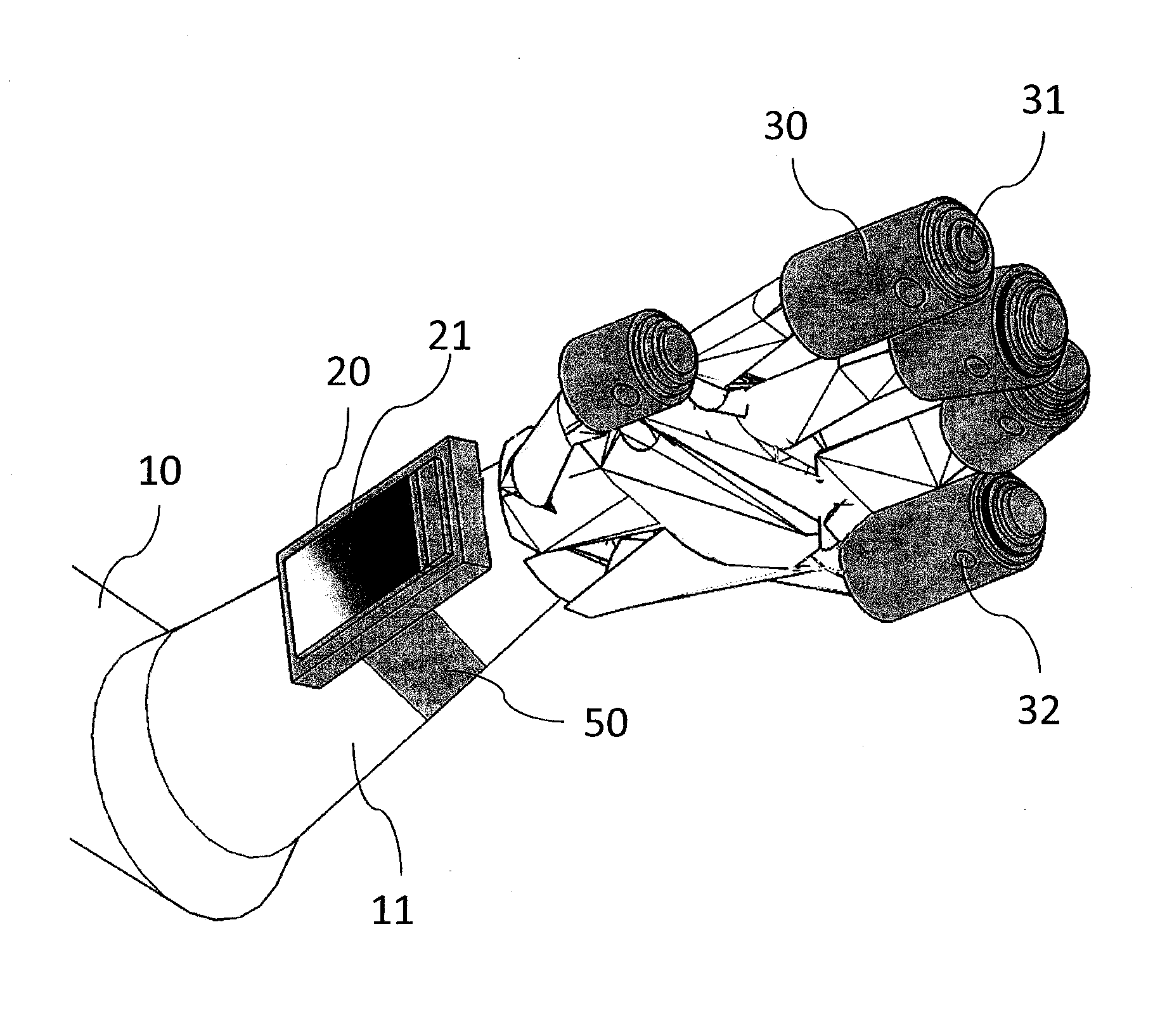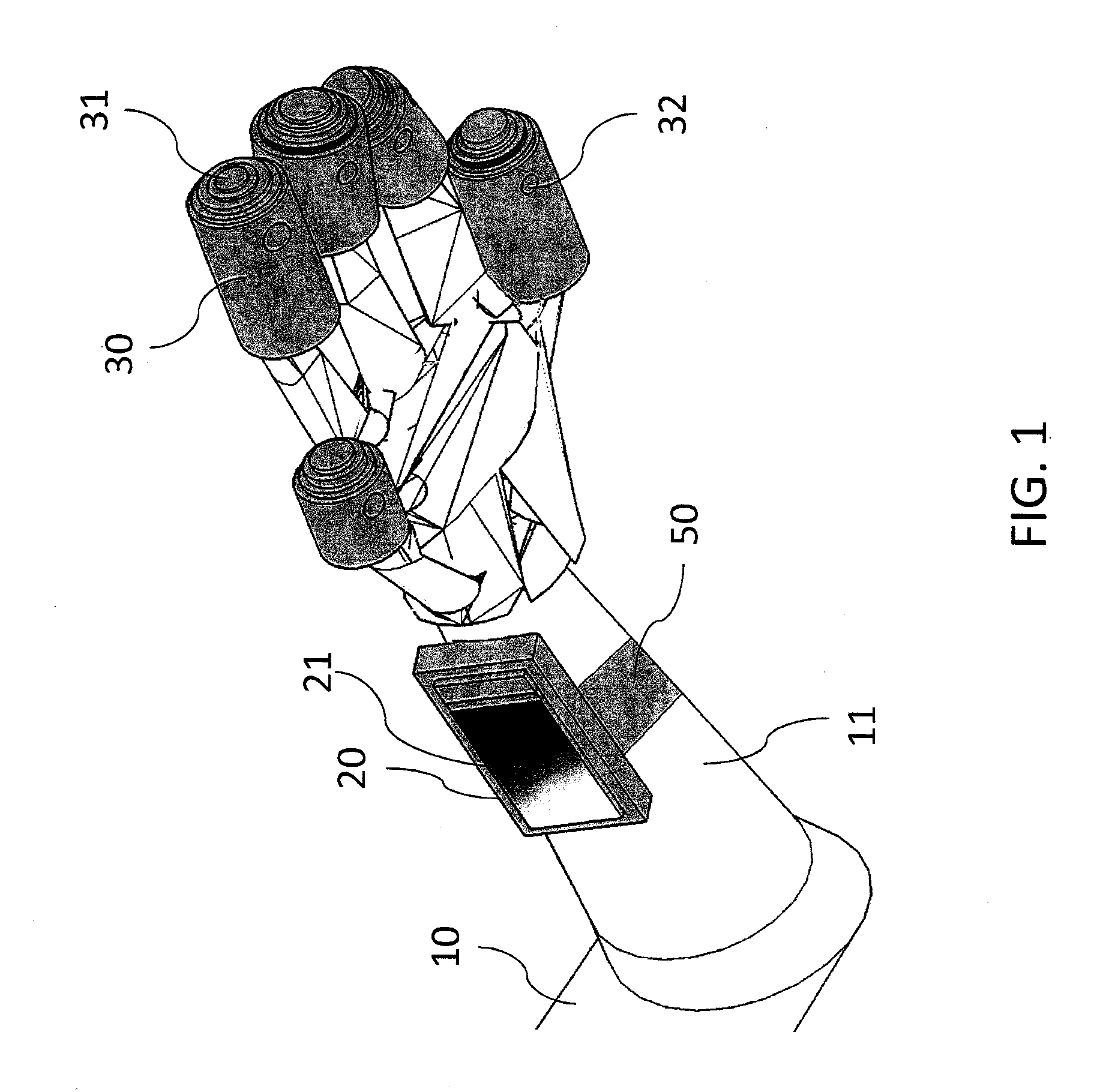System and method for providing a prosthetic device with non-tactile sensory feedback
a technology of sensory feedback and prosthetic devices, applied in the field of providing sensory information detection, processing, and feedback to prosthetic users, can solve the problems of inconvenient use, inability to provide tactile feedback to standard prosthetic devices regarding the physical aspects of objects, and difficulty in using upper extremity prosthetic arms for handling objects, etc., to achieve shorten the learning curve for adaptation, facilitate use and convenien
- Summary
- Abstract
- Description
- Claims
- Application Information
AI Technical Summary
Benefits of technology
Problems solved by technology
Method used
Image
Examples
Embodiment Construction
[0037]In the following detailed description, only certain exemplary embodiments of the present invention are shown and described, by way of illustration. As those skilled in the art would recognize, the described exemplary embodiments may be modified in various ways, all without departing from the spirit or scope of the present invention. Accordingly, the drawings and descriptions are to be regarded as illustrative in nature, and not restrictive.
[0038]In one embodiment of the present invention shown in FIG. 1 and FIG. 2, tip pressure sensors 31 and pad pressure sensors 32 are placed against the fingers of the prosthetic hand. These pressure sensors may be encapsulated in a material such as a rubber or plastic conforming to the shape of the fingers to form finger cots such that they fit snugly around the fingers of the prosthetic hand while still allowing for flexibility and mobility. The pressure sensors 31 and 32 may be the same or different, and may incorporate a multiplicity of s...
PUM
 Login to View More
Login to View More Abstract
Description
Claims
Application Information
 Login to View More
Login to View More - R&D
- Intellectual Property
- Life Sciences
- Materials
- Tech Scout
- Unparalleled Data Quality
- Higher Quality Content
- 60% Fewer Hallucinations
Browse by: Latest US Patents, China's latest patents, Technical Efficacy Thesaurus, Application Domain, Technology Topic, Popular Technical Reports.
© 2025 PatSnap. All rights reserved.Legal|Privacy policy|Modern Slavery Act Transparency Statement|Sitemap|About US| Contact US: help@patsnap.com



